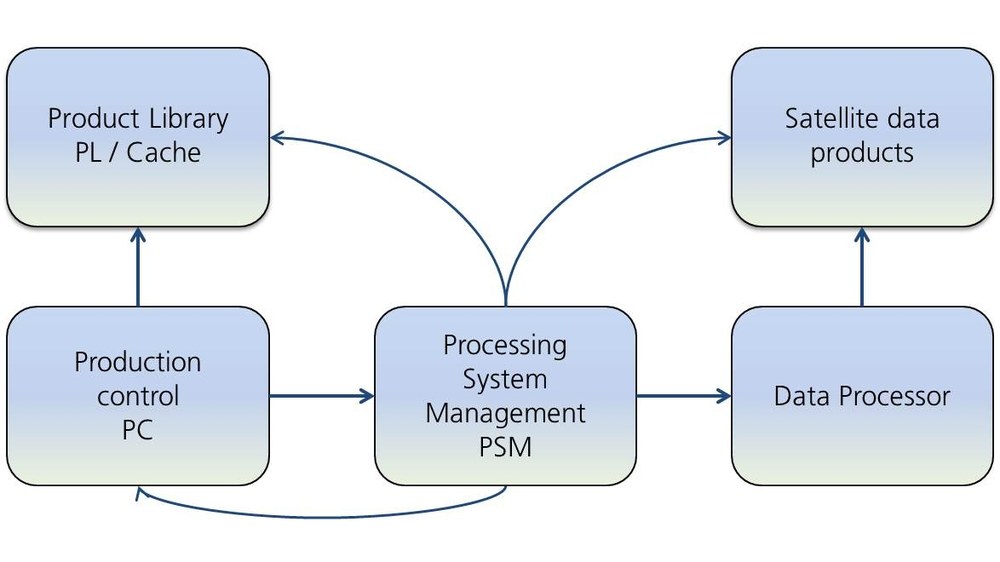Processing Environment
The processing of the AVHRR data takes place in the processing infrastructure of the DFD (GeoFarm) using the DIMS environment (Data Information and Management System). The scientific data processors conform to the IPF Interface Standard and are called by the DIMS Processing System Management (PSM). Technically, the PSM forms the interface between the scientific data processors and the processing and archiving tools of DIMS.
To optimize the total throughput, the complete data production chain is handled bulk-wise, the processing of a single bulk in the respective Processing System however is data driven. The DIMS Production Control controls via the product library which input products are transferred bulk-wise from the archive to the Processing Storage of the GeoFarm. Further it controls which processing steps are conducted on which processing system for the input products available in the Processing Storage. For those generated output data, which are not needed anymore for subsequent processing steps, the DIMS Production Control triggers the archiving again via the DIMS Product Library. The total workflow of the DIMS Production Control was divided into three independent operational procedures to ensure that the processing system is always fed with input data: a) „Staging“: Transfer of the input products from the robot archive into the into the archive disk cache, b) „Retrieving“: Transfer of the input products from archive disk cache to the Processing Storage of the GeoFarm and c) „Processing und Archiving“: Processing of the input data and archiving of the resulting output data.

The compilation of the various time series from the AVHRR data is organized in different phases. First of all, the raw data are being stitched, to eliminate the redundancy of data from different acquisition stations. Afterwards, the L1b-processing of the stitched data is being pursued to generate TOA Reflectance and Brightness Temperatures. Building on this, L2 processors are triggered in three phases according to their availability and product dependencies. The L2 data is still in orbit geometry. Final processing is done in the last phase with the generation of projected and composited L3 products.
